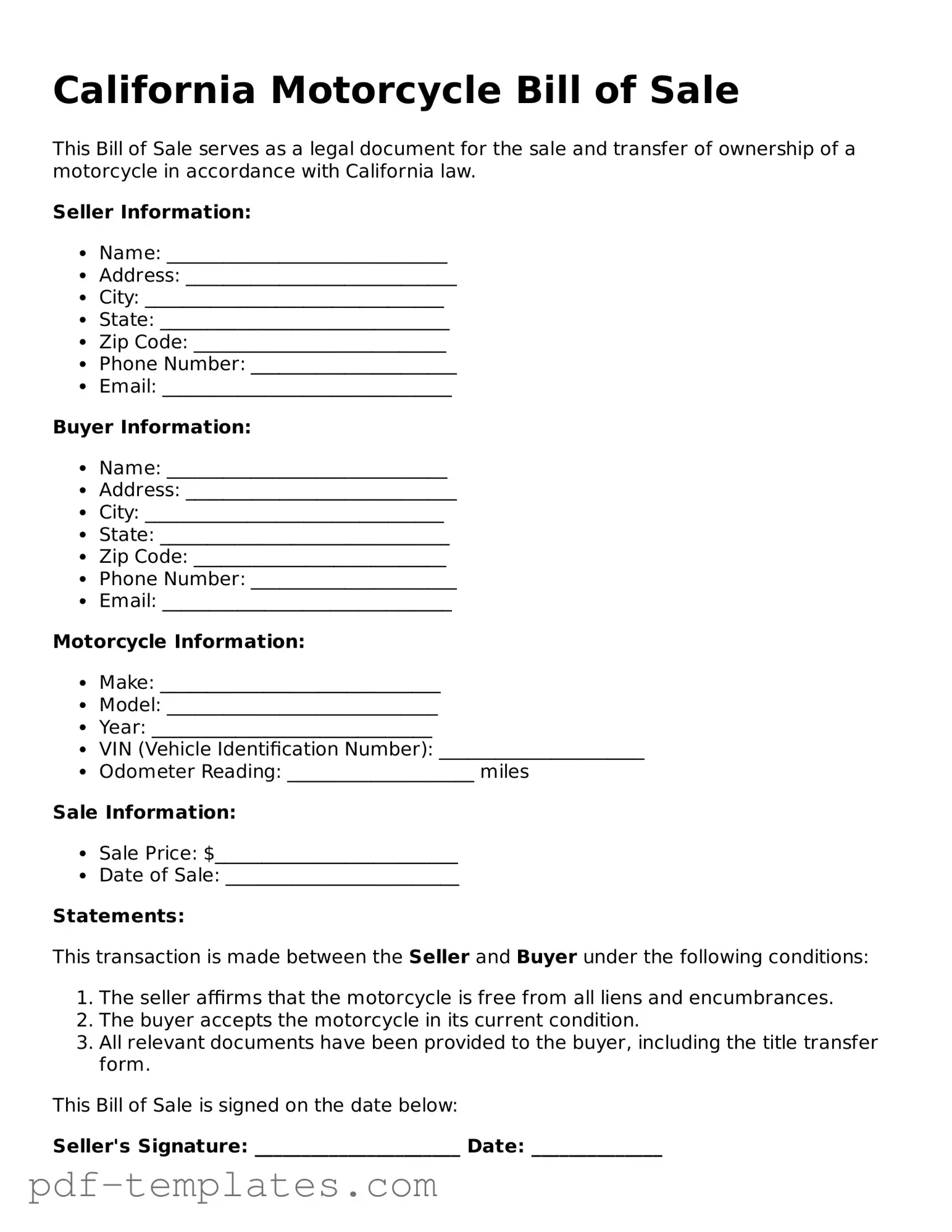The California Vehicle Bill of Sale serves a similar purpose to the Motorcycle Bill of Sale. It documents the transfer of ownership for any vehicle, including cars, trucks, and motorcycles. This form provides essential details such as the vehicle identification number (VIN), sale price, and the names of both the seller and buyer. Like the Motorcycle Bill of Sale, it acts as proof of the transaction and can be used for registration purposes with the California Department of Motor Vehicles (DMV).
The California Title Transfer form is another document that shares similarities with the Motorcycle Bill of Sale. This form is required when ownership of a vehicle is transferred from one person to another. It includes important information about the vehicle, such as the VIN and title number. While the Motorcycle Bill of Sale serves as proof of sale, the Title Transfer form officially updates the ownership records with the DMV, ensuring that the new owner is recognized legally.
The California Application for Title or Registration is also akin to the Motorcycle Bill of Sale. This form is used when a vehicle is being registered or when a new title is being issued. It collects details about the vehicle and the owner, similar to the Motorcycle Bill of Sale. This document is crucial for ensuring that the vehicle is legally registered in the new owner's name and can be used alongside the Motorcycle Bill of Sale for a smooth registration process.
The California Odometer Disclosure Statement is another related document. This form is required when selling or transferring ownership of a vehicle, including motorcycles. It verifies the odometer reading at the time of sale to prevent fraud. While the Motorcycle Bill of Sale outlines the sale transaction, the Odometer Disclosure Statement focuses specifically on the vehicle's mileage, ensuring transparency and accuracy in the sale.
The California Release of Liability form is similar in that it protects the seller after the sale. Once a motorcycle is sold, the seller must notify the DMV to release them from future liabilities associated with the vehicle. This document confirms that the seller is no longer responsible for the motorcycle, which is a critical step following the completion of the Motorcycle Bill of Sale.
Finally, the California Vehicle Registration Renewal form can also be compared to the Motorcycle Bill of Sale. While the latter documents the sale, the registration renewal form is necessary for keeping the vehicle legally on the road. This form requires information about the vehicle and its owner, ensuring that all records are up-to-date. Both documents are essential for maintaining compliance with California's vehicle laws and regulations.
